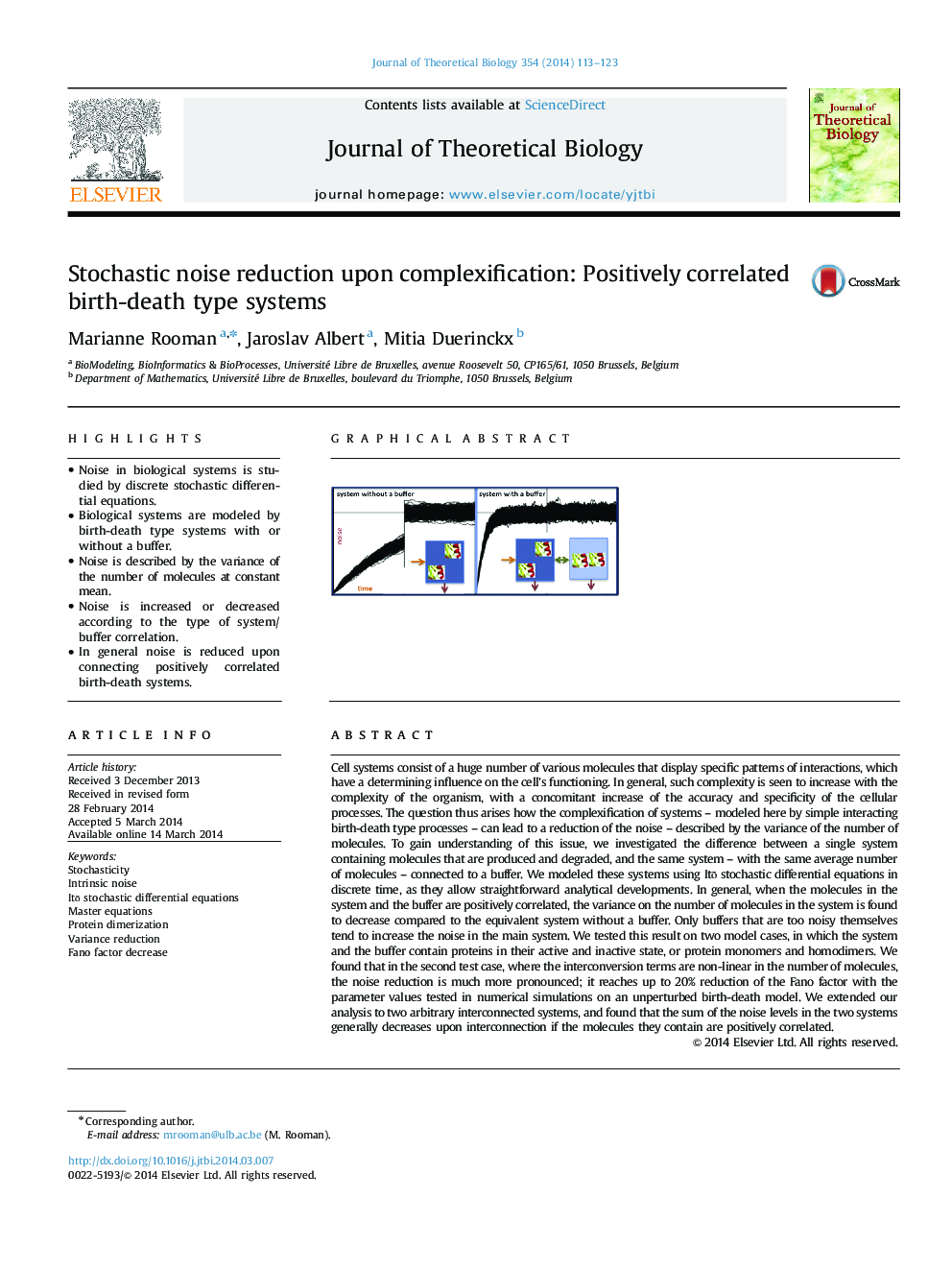| کد مقاله | کد نشریه | سال انتشار | مقاله انگلیسی | نسخه تمام متن |
|---|---|---|---|---|
| 4496182 | 1623856 | 2014 | 11 صفحه PDF | دانلود رایگان |
• Noise in biological systems is studied by discrete stochastic differential equations.
• Biological systems are modeled by birth-death type systems with or without a buffer.
• Noise is described by the variance of the number of molecules at constant mean.
• Noise is increased or decreased according to the type of system/buffer correlation.
• In general noise is reduced upon connecting positively correlated birth-death systems.
Cell systems consist of a huge number of various molecules that display specific patterns of interactions, which have a determining influence on the cell׳s functioning. In general, such complexity is seen to increase with the complexity of the organism, with a concomitant increase of the accuracy and specificity of the cellular processes. The question thus arises how the complexification of systems – modeled here by simple interacting birth-death type processes – can lead to a reduction of the noise – described by the variance of the number of molecules. To gain understanding of this issue, we investigated the difference between a single system containing molecules that are produced and degraded, and the same system – with the same average number of molecules – connected to a buffer. We modeled these systems using Itō stochastic differential equations in discrete time, as they allow straightforward analytical developments. In general, when the molecules in the system and the buffer are positively correlated, the variance on the number of molecules in the system is found to decrease compared to the equivalent system without a buffer. Only buffers that are too noisy themselves tend to increase the noise in the main system. We tested this result on two model cases, in which the system and the buffer contain proteins in their active and inactive state, or protein monomers and homodimers. We found that in the second test case, where the interconversion terms are non-linear in the number of molecules, the noise reduction is much more pronounced; it reaches up to 20% reduction of the Fano factor with the parameter values tested in numerical simulations on an unperturbed birth-death model. We extended our analysis to two arbitrary interconnected systems, and found that the sum of the noise levels in the two systems generally decreases upon interconnection if the molecules they contain are positively correlated.
Figure optionsDownload as PowerPoint slide
Journal: Journal of Theoretical Biology - Volume 354, 7 August 2014, Pages 113–123
